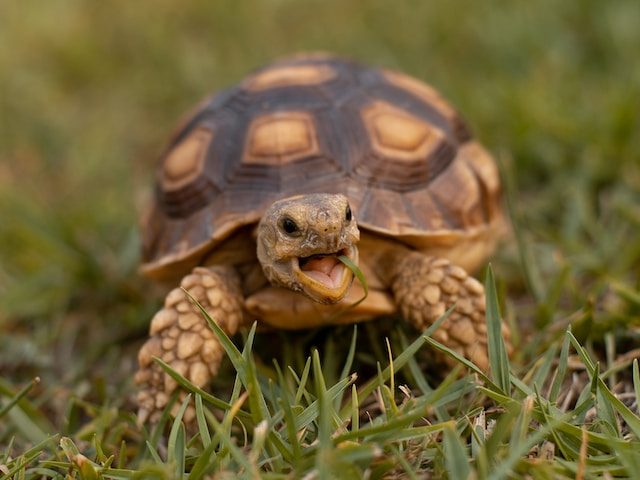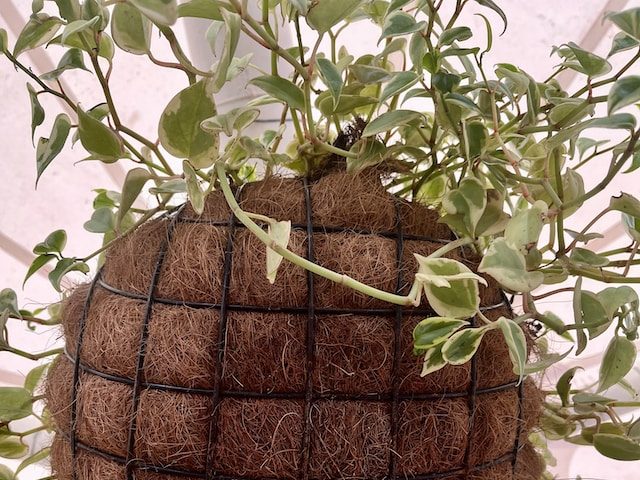Low Light Cat Safe Houseplants

Picking the right houseplants for your home can be daunting. There are so many things to consider in terms of what the plant needs, but also other factors like their toxicity to pets.
Finding a low-light plant that’s also totally safe for your cat to be around isn’t as difficult as you might think. There are quite a few low-light tolerant non-toxic houseplants and below we will give you the rundown of our favorite 10.
Contents
Understanding Low Light Conditions
Low light doesn’t mean no light. It’s less about the intensity of the light and more about the duration and consistency of the light.
Naturally, low light conditions will be areas in your home that are far from windows, or rooms that get minimal daylight. Remember, while these plants are tolerant of low light conditions, they still need some light to photosynthesise and thrive.
The great thing about these low-light houseplants that we’ve listed below is that they can adapt and start to flourish even in less-ideal light conditions.
Whether you’re a seasoned plant parent or a budding green thumb, these pet-friendly, low light houseplants are an excellent addition to your indoor garden.
Top 10 Low Light Houseplants that are Cat Safe
1. Spider Plant
Spier Plants thrive in a range of lighting conditions, from partial to full shade. Their long, slender, arching leaves can jazz up any living space and they are absolutely safe for your cats and kittens.
- Light Requirement: Low to medium light. They appreciate a bit of indirect sunlight though.
- Watering: Aim for consistently moist, but never waterlogged soil. They are pretty drought-tolerant and will start to look quite droopy if they need more water.
- Additional Care: Spider Plants are non-toxic and perfectly safe for cats.
Another benefit is that a Spider Plant will help improve your home’s air quality too as NASA rates them as top air purifiers, removing toxins like xylene and formaldehyde from your home.
2. Ponytail Palm
The Ponytail Palm is a perfect choice for both low light conditions and those of us with curious cats. You can trust it to not just be safe, but also to purify the air and add a unique touch to your home with its intriguing shape and cascading ‘hair’.
Your Ponytail Palm will appreciate a well-draining pot and soil as it prefers staying on the drier side.
- Light: Although adaptable to low light, prefers bright indirect light.
- Water: Water sparingly, allowing the top inch of soil to dry out between waterings.
- Extra Care: Loves well-draining soil and pots with drainage holes.
3. Calathea Orbifolia
The Calathea Orbifolia is a tropical plant most famous for its large, broad leaves with silver bands that are eye-catching even in low light.
Not only will this plant thrive under minimal lighting, but it’s entirely safe for your cats too.
One main thing to remember though is just like other Calathea varieties, this one loves a humid environment.
- Watering: Cat owners, remember to water this plant only when the top inch of the soil has dried out as overwatering can cause root rot.
- Light: Although the Calathea Orbifolia tolerates low light, a bit of indirect bright light will make it happier. Avoid direct sunlight, it can dry out the leaves and cause brown and yellow patches.
- Humidity: As mentioned earlier, maintain a high humidity environment for this plant. Misting the leaves or using a pebble tray filled with water can help with this.
4. Nerve Plant
The Nerve Plant, or Fittonia, is loved for its mosaic pattern of red, pink, or white veins crisscrossing rich green leaves. It gets its name from these distinctive, nerve-like patterns. Although the name might sound a bit dangerous, Nerve Plants are totally safe and non-toxic for cats.
While it prefers low light, it won’t do well in utter darkness. It also has a reputation for being a tad fussy and likes its environment just right. Too much water, heat, light or cold can distress this delicate plant, causing its leaves to droop.
But don’t worry, the drooping is an early sign of stress and gives you plenty of time to diagnose and solve the issue.
5. Kentia Palm
If you’re looking for a touch of elegance, then the Kentia Palm could be the perfect low-light hosueplant for you.
Also known as the Kentia Howea or the Sentry plant, this easygoing tropical houseplant not only thrives in low light conditions, but it’s also entirely safe for your cats.
One of the main reasons you should consider adding a Kentia Palm to your indoor jungle is its resilience. It can withstand less-than-ideal conditions, including poorer light, a bit of neglect, or dry air.
While it prefers bright, indirect light, it can also survive quite comfortably in lower light conditions. The only thing that will change in low light is that it may grow a bit slower.
Size: Typically, a Kentia Palm will grow between 5-10 feet indoors. So, if you’re after a larger plant, this is a great choice.
Care: Despite its tropical origins, the Kentia Palm has low water requirements. Watering once every one or two weeks is usually plenty. Just ensure the top inch of the soil is dry before watering again.
Toxcity: The Kentia Palm Poison Control classifies as non-toxic to both cats and dogs.
6. Cast Iron Plant
It’s also known as Aspidistra Elatior, and its resilience to adverse conditions makes it one of the favoured house plants for low light conditions. And best of all, it’s also totally cat safe.
It’s name stems directly from its hardy nature. This plant can withstand not just low light, but also drafty areas, dry conditions, and a general lack of constant attention or care.
So if you’re someone who tends to forget about your plants every now and then, this could be the perfect match for you and your cat.
Plant Care:
- Light: Low light tolerant, but can also withstand brighter conditions.
- Water: They prefer well-drained soil. Water thoroughly and allow the soil to dry out between watering sessions.
- Added Care: Dust the leaves periodically to help the plant perform photosynthesis efficiently. No need for frequent fertilising, once in spring should be quite sufficient.
7. Bromeliads
A tropical favourite, bromeliads are brilliant at brightening up any corners without much light. These evergreen perennials are extremely versatile and are a vivid pop of colour in darker rooms.
Bromeliads are also safe and non-toxic for cats, so you don’t need to worry about having them around your home.
Here are some tips to keep your bromeliad plant healthy:
- Watering: Despite the tropical association, Bromeliads do not need frequent watering. It’s best to wait until the potting medium is dry. Overwatering can invite root rot which quickly leads to a whole range of problems.
- Humidity: They enjoy humid conditions. Mist the leaves occasionally, especially during dry weather or if you keep your home’s temperature higher.
- Feeding: Feed with a good quality bromeliad or tillandsia (air plant) fertiliser during the growing season.
8. Maidenhair Fern
Let’s now move on to the charming Maidenhair Fern (Adiantum), which is one of our favorite houseplants. Although it demands a bit more attention and can be quite fussy about its care, Maidenhair Ferns are safe for cats!
This plant is known for its delicate, small leaves and wiry stems, adding a soft texture to your interiors. Suitable for low-light conditions, it makes a perfect addition to any darker corners of your home.
One thing to keep in mind with this particular plant is that it appreciates a very humid environment. If your home tends to be on the dry side, you could consider placing the pot on a tray filled with pebbles and a small amount of water, creating a mini-humidifier effect.
As this Fern has very small delicate leaves, dry air can be really damaging and you’ll soon see yellow and brown areas across your Fern.
But don’t let that scare you off! With atouch of extra care, your Maidenhair Fern can thrive and flourish.
9. Chinese Money Plant
Also known as Pilea peperomioides, the Chinese Money Plant has a rich folklore associated with it. Famed for attracting wealth, hence the nickname, this plant is a popular choice and it’s also safe for cats.
Their vibrant, coin-shaped leaves stand out in a crowd and they are very adaptable to a range of environments, including lower light levels. The main thing that just changes with less light is growth can be slower and you may see less pups grow.
Care requirements for this plant are relatively straightforward. Depending on how low the light is, you might need to rotate the plant occasionally to ensure it gets even exposure. You’ll see it try to reach towards the sunlight if it’s not getting enough.
Additionally, these plants prefer a well-draining potting mix. Overly damp soil can lead to root rot, a common issue among indoor plants.
You can easily propagate Chinese Money Plants by cutting a leaf and immersing it in water. Once roots start emerging, plant it in soil, and you’ll soon have another Pilea to gift or grow.
Remember to give the plant a good shower every once in a while. Dust can accumulate on the leaf’s surface, hindering its light absorption (which affects photosynthesis).
10. Rattlesnake Plant
You might not expect the Rattlesnake to be non-toxic to cats due to it’s name, but it is! And on top of this, it can also adapt well to lower light areas.
The tops of the leaves are an appealing green colour, dotted with darker green spots – a feature that resembles the scales of a rattlesnake (hence the name). On the flip side of the leaves is a beautiful purplish-red hue, creating a bold contrast.
Latin Name: Calathea lancifolia
Light Requirement: Low to medium
Water Requirement: Moderate
Soil Type: Well-draining
Care Tips for Houseplants in Low Light
Thriving in low light conditions doesn’t mean your houseplants won’t appreciate some extra love and care. Here are a few tips:
Adapt to Low Light: Keep in mind, not all low light is created equal. Gradually introduce your plants to low light areas to help them adjust.
Avoid Overwatering: Plants in low light tend to use less water, as their rate of photosynthesis is slower. Make sure to avoid over watering; a good rule of thumb is to wait until the top inch of soil is dry before watering again.
Rotate Your Plants: Allow all parts of your plant to get exposure to limited light source by rotating it periodically. This promotes balanced growth.
Prune Regularly: Regular trimming helps the plant focus its energy on new growth. Removing yellow, browning, or damaged leaves can keep the plant healthy.
Choose the Right Container: Use a pot with sufficient drainage to prevent water from sitting at the bottom, which can cause root rot.
Fertilise Sparingly: In low light, houseplants will grow slower, meaning they don’t require as much fertiliser. Overfertilising can lead to build up of salts that can harm your plant – it’s often safer to under-fertilise than overdo it.














